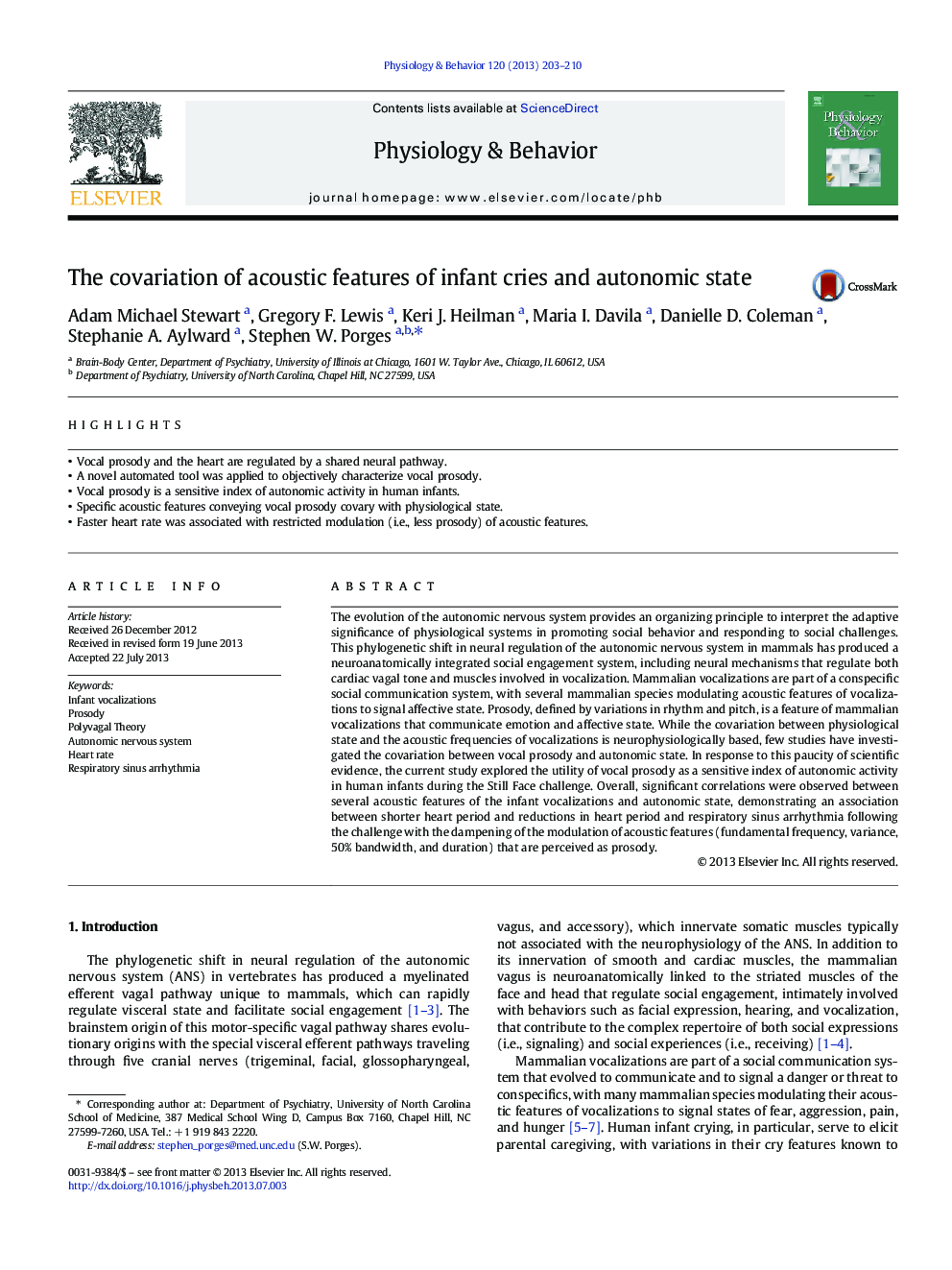| کد مقاله | کد نشریه | سال انتشار | مقاله انگلیسی | نسخه تمام متن |
|---|---|---|---|---|
| 5924661 | 1571197 | 2013 | 8 صفحه PDF | دانلود رایگان |
عنوان انگلیسی مقاله ISI
The covariation of acoustic features of infant cries and autonomic state
ترجمه فارسی عنوان
تعدیل ویژگی های صوتی گریه نوزادان و حالت اتوایی
دانلود مقاله + سفارش ترجمه
دانلود مقاله ISI انگلیسی
رایگان برای ایرانیان
کلمات کلیدی
موضوعات مرتبط
علوم زیستی و بیوفناوری
بیوشیمی، ژنتیک و زیست شناسی مولکولی
فیزیولوژی
چکیده انگلیسی
The evolution of the autonomic nervous system provides an organizing principle to interpret the adaptive significance of physiological systems in promoting social behavior and responding to social challenges. This phylogenetic shift in neural regulation of the autonomic nervous system in mammals has produced a neuroanatomically integrated social engagement system, including neural mechanisms that regulate both cardiac vagal tone and muscles involved in vocalization. Mammalian vocalizations are part of a conspecific social communication system, with several mammalian species modulating acoustic features of vocalizations to signal affective state. Prosody, defined by variations in rhythm and pitch, is a feature of mammalian vocalizations that communicate emotion and affective state. While the covariation between physiological state and the acoustic frequencies of vocalizations is neurophysiologically based, few studies have investigated the covariation between vocal prosody and autonomic state. In response to this paucity of scientific evidence, the current study explored the utility of vocal prosody as a sensitive index of autonomic activity in human infants during the Still Face challenge. Overall, significant correlations were observed between several acoustic features of the infant vocalizations and autonomic state, demonstrating an association between shorter heart period and reductions in heart period and respiratory sinus arrhythmia following the challenge with the dampening of the modulation of acoustic features (fundamental frequency, variance, 50% bandwidth, and duration) that are perceived as prosody.
ناشر
Database: Elsevier - ScienceDirect (ساینس دایرکت)
Journal: Physiology & Behavior - Volume 120, 15 August 2013, Pages 203-210
Journal: Physiology & Behavior - Volume 120, 15 August 2013, Pages 203-210
نویسندگان
Adam Michael Stewart, Gregory F. Lewis, Keri J. Heilman, Maria I. Davila, Danielle D. Coleman, Stephanie A. Aylward, Stephen W. Porges,
